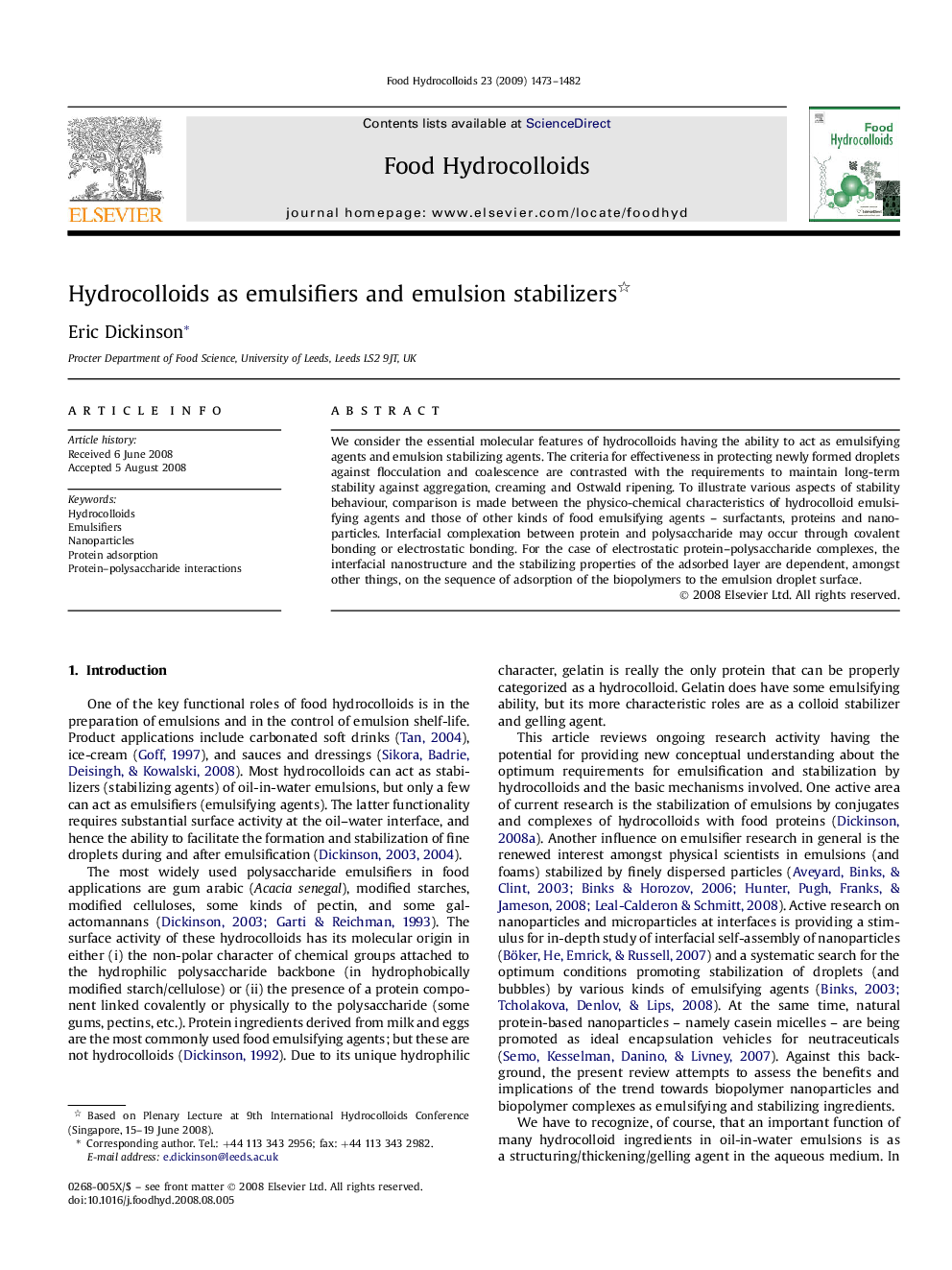| Article ID | Journal | Published Year | Pages | File Type |
|---|---|---|---|---|
| 604812 | Food Hydrocolloids | 2009 | 10 Pages |
Abstract
We consider the essential molecular features of hydrocolloids having the ability to act as emulsifying agents and emulsion stabilizing agents. The criteria for effectiveness in protecting newly formed droplets against flocculation and coalescence are contrasted with the requirements to maintain long-term stability against aggregation, creaming and Ostwald ripening. To illustrate various aspects of stability behaviour, comparison is made between the physico-chemical characteristics of hydrocolloid emulsifying agents and those of other kinds of food emulsifying agents - surfactants, proteins and nanoparticles. Interfacial complexation between protein and polysaccharide may occur through covalent bonding or electrostatic bonding. For the case of electrostatic protein-polysaccharide complexes, the interfacial nanostructure and the stabilizing properties of the adsorbed layer are dependent, amongst other things, on the sequence of adsorption of the biopolymers to the emulsion droplet surface.
Related Topics
Physical Sciences and Engineering
Chemical Engineering
Colloid and Surface Chemistry
Authors
Eric Dickinson,
